CarEdge saved me over 4,500 dollars on a brand new Honda Pilot. I can't say thank you enough.
Price intelligence
Find a wide range of vehicle listings with market insights on new and used listings near you.


Help us personalize your CarEdge experience — it only takes a second.
Your answers help us personalize your CarEdge journey — we’ll follow up with tips and next steps that match your buying timeline.
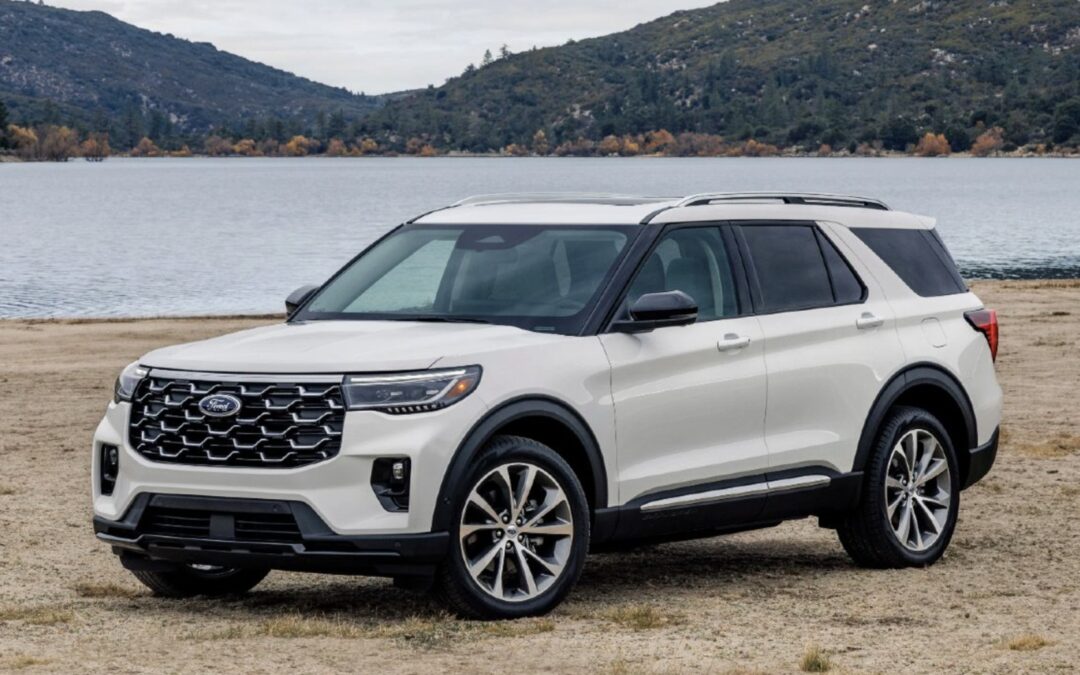
One undeniable sign that it’s officially a buyer’s market is that year-end sales are arriving earlier than ever in 2025. Black Friday SUV deals are here, and for SUV shoppers planning to buy in December, you may want to move up your timeline. This year’s deals include 0% APR financing, deferred payment programs, and cheap lease offers. To save buyers time and money during this hectic season, we sorted through all the sales to find the best incentives. Here’s a look at five Black Friday SUV deals worth your time.
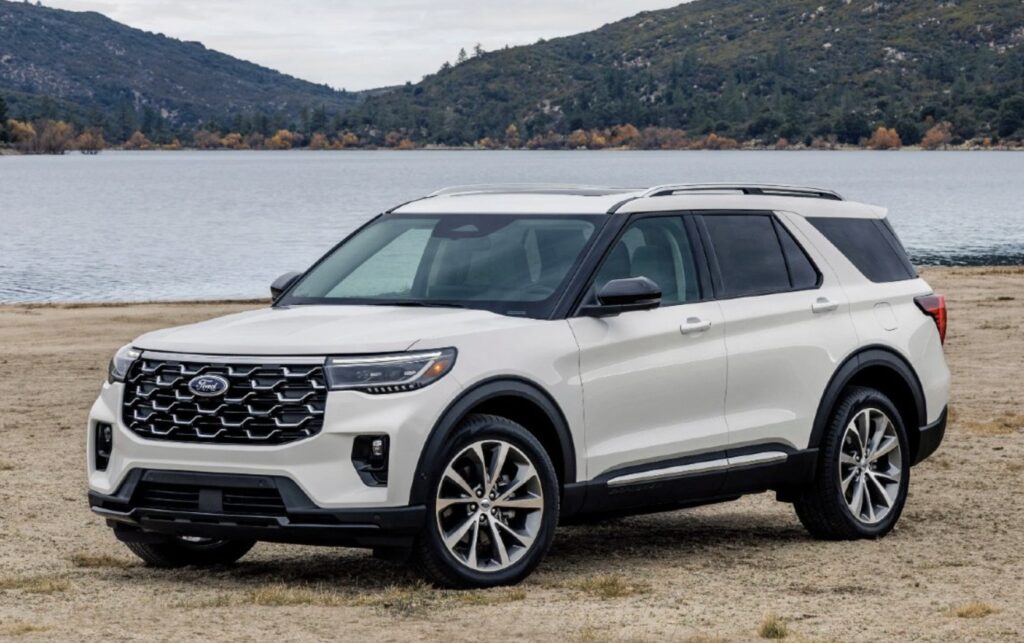
Black Friday Sales: 0% APR for 60 months, $0 down payment, and no payments for 90 days.
As a top-seller in the mid-size SUV segment, we don’t see zero percent financing often for the Explorer. Don’t expect this offer to return once 2025 inventory is cleared out. These offers expire on January 5, 2026. See offer details.
Browse Explorer listings with the power of local market data

Black Friday Sales: 0% APR for 60 months, $0 down payment, and no payments for 90 days.
Lease Offer: $399/month for 36 months with just $399 due at signing, and zero down payment
These offers expire on January 5, 2026. See offer details
Browse Escape listings with local market data

Black Friday Sales: 0% APR financing for 36 months. Lease Offer: $289/month for 36 months with just $419 due at signing (ultra low-mileage lease)
These offers expire on December 1, 2025. See offer details
Browse Trailblazer listings with local market data
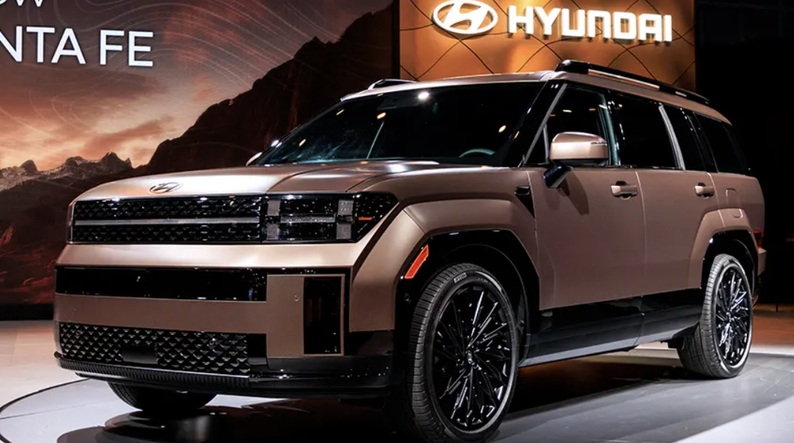
Black Friday Sales: 0% APR financing for 60 months with no payments for 90 days, plus up to $3,500 bonus cash (offers can be combined).
Lease Offer: Contact dealer for current lease specials
These offers expire on December 1, 2025. See offer details.
Browse Santa Fe listings with market price data
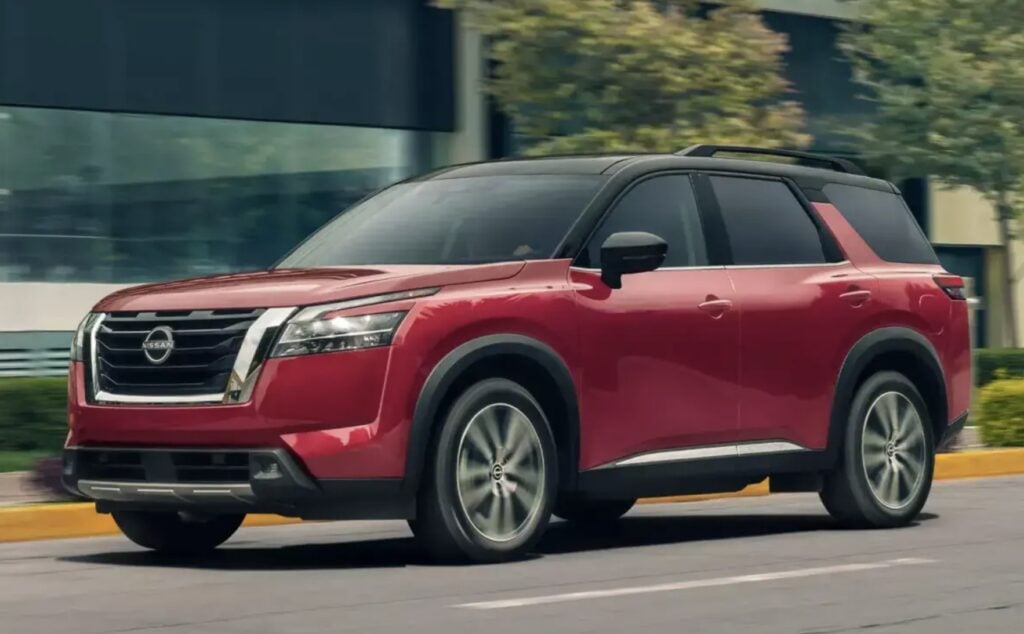
Black Friday Sales: 0% APR financing for 60 months OR $5,000 cash (offers cannot be combined).
Lease Offer: Contact dealer for current lease specials
This offer expires on December 1, 2025. See offer details.
Browse Pathfinder listings with the power of local market data
For most of 2025, car dealers and automakers have enjoyed a sellers market. Now, as new car inventory rises and the new year quickly approaches, the car market has flipped. Black Friday deals are only the beginning of the year-end buying season. If you don’t see the deal you’re after, just wait a few weeks. December sales will be even bigger.
Stay tuned to the CarEdge Best Deals Hub for the latest updates, and don’t forget to download your free car buying cheat sheets and take them with you to the dealership.

After a year of limited inventory, rising prices, and dealerships holding all the cards, the car market has finally shifted in favor of consumers. If you’ve been waiting for the right time to buy or lease a car, that moment may have arrived. Here are three clear signs that we’re in a buyer’s market, and why December will bring even bigger opportunities to save.
The days of empty dealer lots and stiff competition are over. According to Cox Automotive, both new and used car inventory levels are climbing, giving buyers more options and significantly more negotiating power.
Used Car Inventory Hits 2025 High
Used car inventory has reached a new high for 2025, hitting 48 days of market supply. There are now 2.26 million used cars for sale across the U.S., with an average listing price of $25,825. This increase in available vehicles means dealers are more motivated than ever to move inventory off their lots. It also means that those who trade-in and sell are getting less for their vehicles than in months prior. For used car buyers, all signs point towards a buyer’s market.
New Car Inventory Climbs to Highest Level Since Q1
On the new car side, inventory is also rising as buyers strategically wait for December’s year-end incentives. As of the latest data from Cox Automotive, new car inventory has climbed to 84 days, with 2.87 million new cars for sale—a 4.8% increase month over month. New car inventory is now at the highest level since the first quarter of this year.
Why This Matters for Buyers
Higher inventory levels translate directly to greater negotiating power at the dealership. When dealer lots are filling up, the leverage shifts from seller to buyer. Dealers need to move vehicles to make room for incoming inventory, and that pressure works in your favor. It’s officially a buyer’s market.

Nothing signals a buyer’s market quite like aggressive incentives, and November’s deals are some of the best we’ve seen all year. December will be even better. “There’s a reason we always tell the CarEdge Community to wait until December for the best deals,” noted CarEdge co-founder Ray Shefska. “But if you see a deal you like in November, don’t stress yourself out about it. Now is a great time to buy, and many of this month’s sales will simply be carried over to December.”
0% APR Financing Spreads to Luxury and Popular Models
Zero-percent financing is creeping into the luxury car market and appearing on models that aren’t accustomed to receiving big discounts. In November, there are 29 offers of zero-percent financing available—and it’s not just slow-sellers and EVs benefiting from these deals.
Popular, high-demand models like the Chevy Silverado 1500, Ram 1500, and Hyundai Tucson now feature interest-free financing. This is a big shift from the seller’s market of recent years, when even modest incentives were rare.
Lease Deals Are Getting Better Too
If you’re considering leasing, the deals are equally compelling. Ford is offering a number of lease specials with just the first month’s payment due at signing. Dozens of new cars are now available for under $250 per month with under $3,500 due at signing.
With depreciation being the #1 hidden cost of car ownership, leasing is a smart way to protect your wallet. You avoid the steep depreciation hit that comes with owning a new car, while still enjoying the latest models with full warranty coverage.
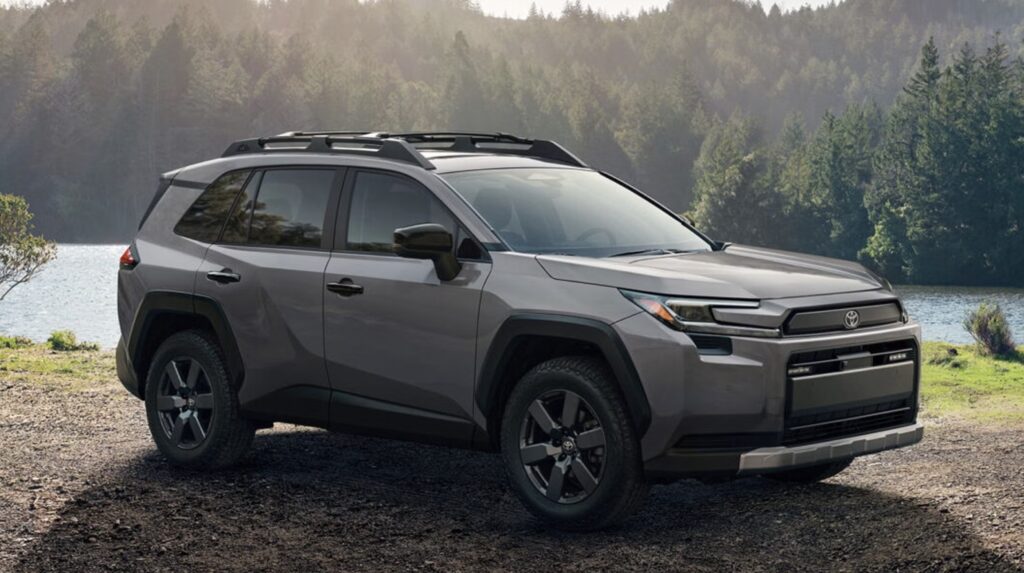
The calendar doesn’t lie, and dealers know it. When 2026 arrives, any 2025 model still sitting on the lot instantly becomes “last year’s model”, and takes a significant depreciation hit.
900,000 Reasons to Negotiate
There are currently 900,000 2025 model year vehicles sitting on dealer lots across the country. That means dealers have just weeks left to sell these cars before they face growing losses. No dealer wants to be stuck with dozens of last year’s models when the new year begins.
Model Year Changeover Has to Happen One Way or Another
This creates a powerful incentive for dealers to negotiate. They need to clear out 2025 inventory to make room for 2026 models, and they’re willing to offer aggressive discounts to do it. For informed buyers, this represents one of the best opportunities of the year to score a deal.
If you’ve been on the fence about buying or leasing a car, the conditions are aligned in your favor. It’s officially a buyer’s market after many months of stagnation. Take advantage of higher inventory to negotiate confidently, explore the best financing and lease deals we’ve seen in years, and use the pressure of model year changeover to secure additional discounts.
Don’t go it alone when shopping for year-end car deals. Use your personal AI agent to negotiate car prices with ease, or have a human Concierge give you the complete white-glove experience. CarEdge always works for consumers, and never dealers or automakers.
How do we do it? Our team brings decades of experience in the business to the table. We simply keep the lights on by providing expert car buying services to the everyday driver!
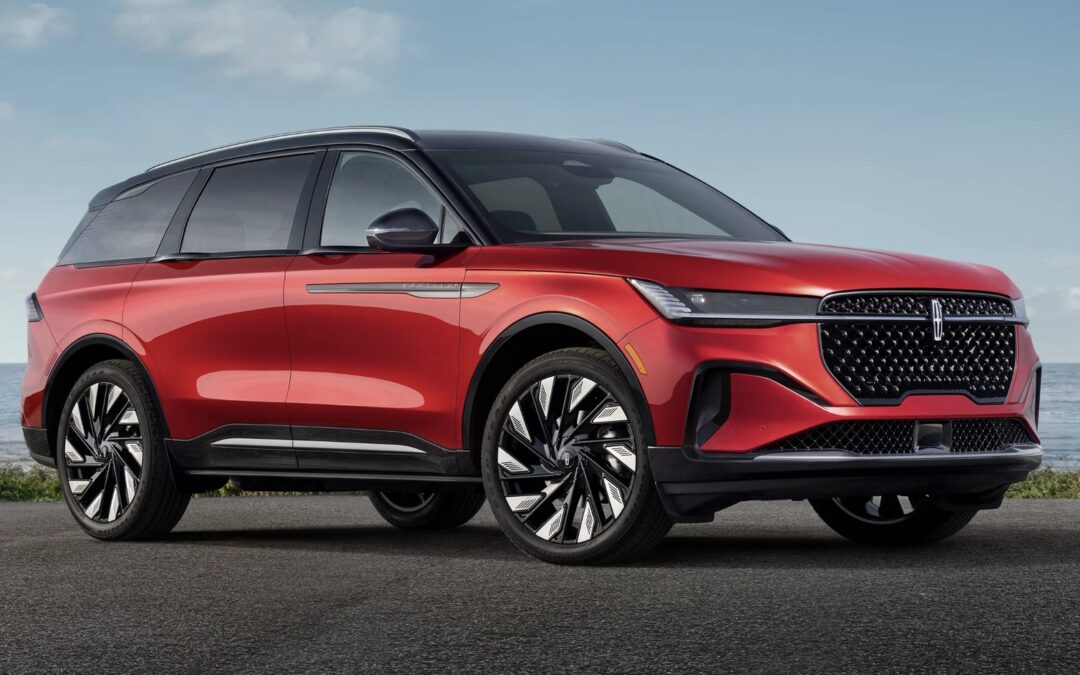
Honda and Ford just kicked off their year-end sales a whole month early. With deals that expire in early 2026, these two OEMs are jumping the line in the rush to clear out 2025 models. Here’s a look at the best year-end sales from Honda, Acura, Ford, and Lincoln, effective immediately.
Honda doesn’t need to offer the best incentives for one simple reason: their cars sell quickly on their own. So it comes as no surprise that for December, Honda’s best offers are low-APR financing and ‘average’ lease deals. The exception is the 2025 Honda Prologue, which sees continuing 0% APR financing for 60 months.
Here’s a look at Honda’s best year-end sales through December 2025.

2025 Honda Prologue: 0% APR financing for 60 months
2025 Honda Ridgeline: 0.99% APR financing for 60 months
2025 Honda Accord and Accord Hybrid: 2.99% APR financing for 60 months
2026 Honda CR-V and CR-V Hybrid: 3.99% APR financing for 60 months

2025 Honda Accord LX: $279 for 36 months with $4,099 due at signing
2026 Honda Civic LX: $239 for 36 months with $3,599 due at signing
2026 Honda CR-V LX: $319 for 39 months with $4,199 due at signing
Depending on how November’s sales trend for Honda, we could see the automaker unveil more aggressive incentives after Black Friday. Nothing is set in stone, even with offers lasting into the first week of January.
See Honda offer details at Honda.com, and browse local listings.
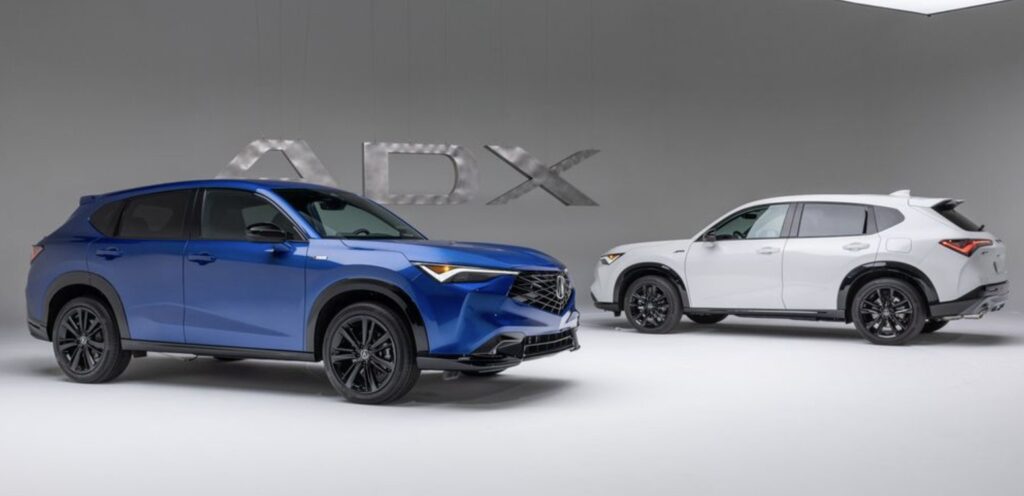
Luxury brands rarely offer big sales, and with Acura, it’s slim pickings this month. For Acura sales extending through the end of the year, the best offer is for the ADX, Acura’s entry-level crossover.
These are the standout offers from Acura for November and December.
2025 Acura ADX: Lease from $429/month for 36 months with $3,499 due at signing.
2025 Acura Integra: 3.99% APR for 60 months
2026 Acura MDX: 4.99% APR for 60 months
2025 Acura RDX: 4.99% APR for 60 months
2025 Acura TLX: 4.99% APR for 60 months
These Acura offers are good through January 5, 2026. See details at Acura.com, and browse local Acura listings.
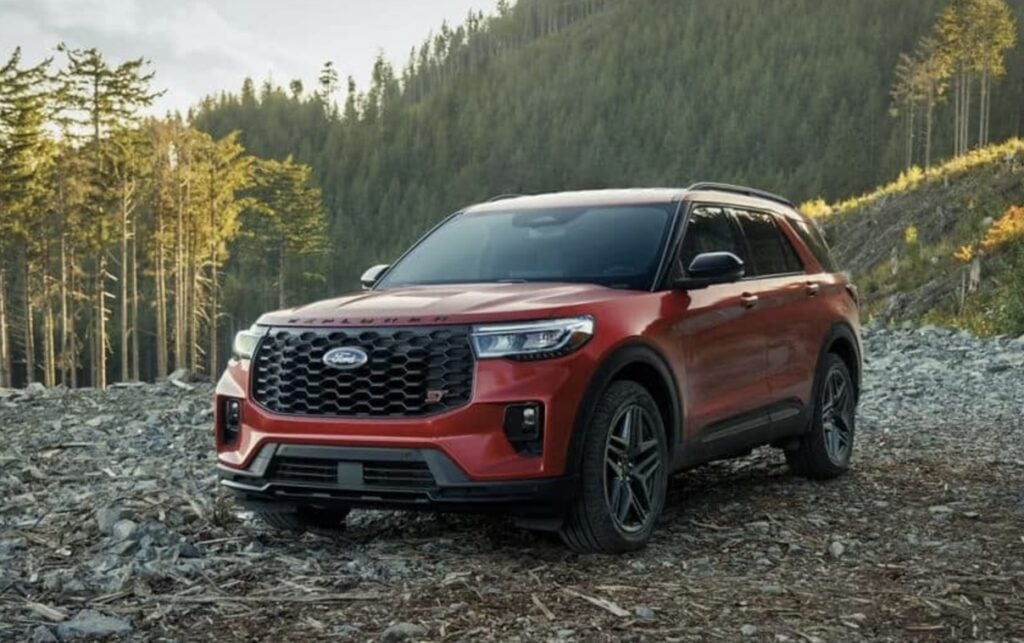
There’s a common theme with Ford’s year-end sales: variety. Ford is offering a selection of finance, cash, and lease deals. We dug through them all to find the best.
2025 Ford Explorer: 3.9% APR financing for 72 months, plus $1,500 bonus cash
2025 Ford Bronco Sport: Lease from $398/month for 36 months with just $399 due at signing
2025 Ford Bronco: Lease from $499/month for 36 months with just $499 due at signing

Option 1 (ends 11/19/25): 0% APR financing for 36 months, $0 down payment, no payments for 90 days
Option 2: (ends 11/19/25): 3.9% APR financing for 72 months, plus $3,250 bonus cash for the STX and XLT
Option 3: (ends 11/19/25): Lease the SuperCrew STX from $477/month for 36 months with just $477 due at signing
Option 4: From now through the end of the year, take advantage of $3,250 cash back on the 2025 F-150 XLT
When Ford’s November sales expire, we expect a new batch of Black Friday deals. Check back for the latest.
See offer details at Ford.com, and browse local Ford inventory.
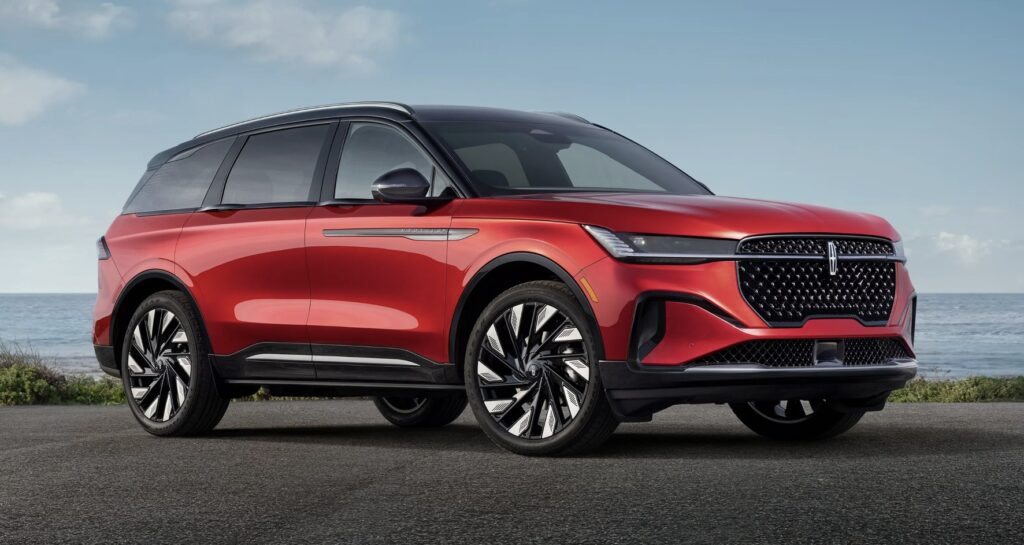
For several months, Lincoln has been pushing controversial 84-month financing for the 2025 Lincoln Aviator. Here at CarEdge, we don’t advise taking out an 84-month auto loan — it’s easy to owe more than your car is worth.
Finally, Lincoln is here with new incentives worth the hype. Here’s what luxury shoppers can expect this Black Friday and through December.
2025 Lincoln Aviator: 0% APR for 48 months, $0 down payment, no payments for 90 days, and $1,000 bonus cash
2025 Lincoln Nautilus: 0% APR for 48 months, $0 down payment, no payments for 90 days, and $1,000 bonus cash
2025 Lincoln Corsair: 0% APR for 48 months, $0 down payment, no payments for 90 days, and $1,000 bonus cash
See Lincoln offer details, and browse local Lincoln listings with market insights.
It’s only November. The avalanche of year-end car deals from other brands won’t arrive until after Black Friday. With that said, if you see the sale you’ve been waiting for now, there’s no reason to wait. However, if you’re less than impressed, or simply need a few more weeks to get your finances in order, you’ve got a few more weeks until the best deals of the year roll out.
Don’t go it alone! Have AI negotiate your out-the-door price BEFORE heading to the dealership with CarEdge Pro. Or, have a human expert handle your entire deal, from car search to negotiating every line item, with our white-glove service CarEdge Concierge.
The time of the year we’ve all been waiting for is finally here. Let’s make the most of it!
Learn about the easiest way to buy a car at CarEdge.com.

If you’ve been holding out for Black Friday pricing on cars, well, you’re already looking at it. And no, we’re not talking about the leftovers dealers couldn’t move in October. These are fresh incentives that just landed, with zero percent financing and cheap lease deals flooding the market. Patient shoppers are being rewarded with the buyer’s market we’ve all been waiting for.
After sifting through all-new offers, we found the 10 best new car deals in November 2025.

Zero-down leases: Taos from $379/month with $0 due, Tiguan from $399/month with $0 due
Volkswagen’s going all-in on zero-down leases this month, and the Taos and Tiguan lead the pack. No money down, reasonable monthly payments, and you’re driving off in a German-engineered SUV. VW’s playing smart here—removing the upfront barrier makes it easier to say yes.

0% APR financing for 60 months
Hyundai is offering zero-percent financing on both the Santa Fe and Tucson, including their hybrid variants. That’s huge. Hybrids almost never get this kind of treatment because they typically sell without help.

0% APR financing for 60 months
Zero-percent financing for five years on one of America’s most iconic SUVs is not something you see often in normal times. For Stellantis, it’s clear that these times are anything but normal. With the brand’s recent sales struggles, they’re pulling out all the stops to keep buyers interested. If you want a Grand Cherokee, it’s definitely a buyer’s market.

0% APR financing for 60 months
Mitsubishi continues its aggressive push with interest-free financing across the entire 2025 lineup. Whether you’re shopping for an Outlander, Eclipse Cross, or Outlander Sport, every vehicle qualifies. It’s the automotive equivalent of free money, and Mitsubishi isn’t backing down. This marks their third consecutive month of blanket zero-percent offers.

0% APR financing for 60 months
Nissan’s zero-percent streak rolls into November—month number four. The brand is leaning hard on U.S. sales to offset struggles overseas, and buyers are reaping the benefits. Three of Nissan’s most popular SUVs are now available with no-interest loans. The Rogue alone accounts for nearly a third of Nissan’s U.S. sales, so this deal matters.

0.9% APR financing for 60 months
The Telluride has been selling like hotcakes for years, often above sticker price. Now it’s finally getting an incentive worth mentioning. Add in the Sorento and Sportage, and you’ve got three solid SUV choices at near-zero rates.
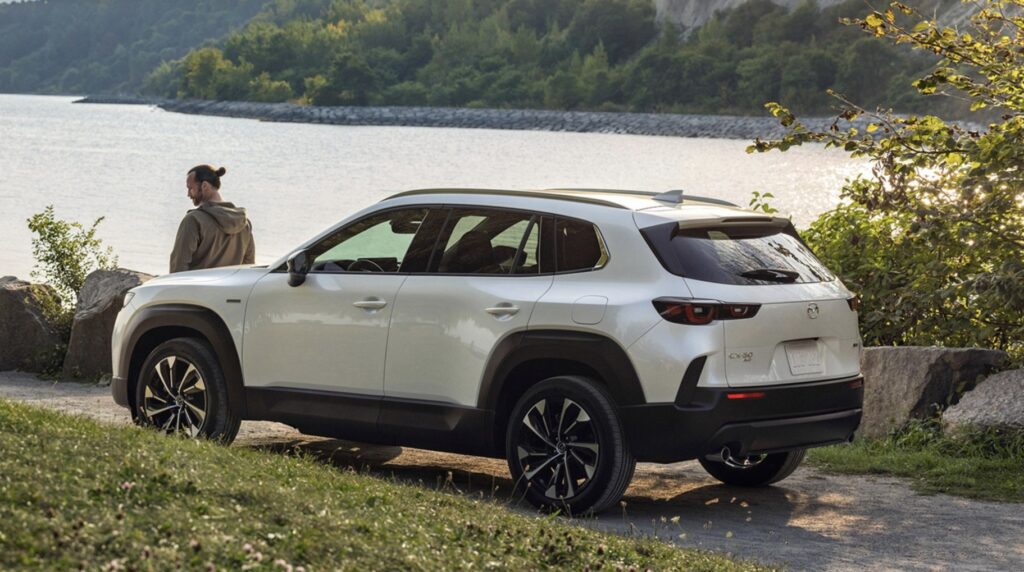
0.9% APR for 60 months (1.9% APR on most other models)
Mazda’s stepping up this month with sub-1% financing on its two best-selling SUVs. The CX-5 remains one of the most popular compact crossovers in America, while the CX-50 brings standard all-wheel drive and extra ground clearance for winter warriors. Even better? Most other Mazda models qualify for 1.9% APR, making this one of the brand’s strongest incentive months in recent memory.
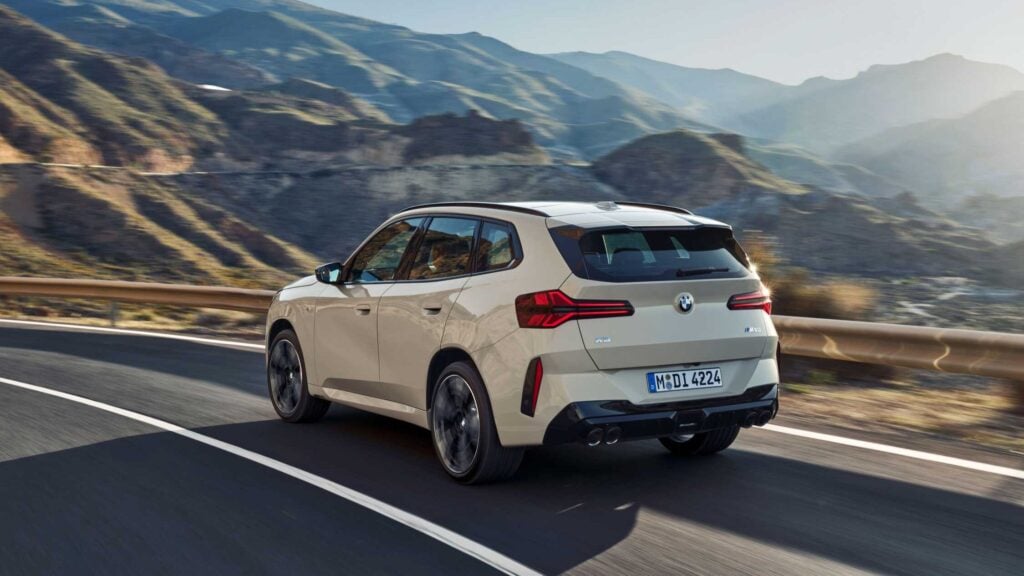
0.9% APR financing for 60 months
Luxury vehicles cost more to finance, so even a small drop in interest rates translates to serious savings over five years. But this is no small drop! If you’re shopping for premium compact SUVs, this rate is tough to beat.

Lease for $289/month (36 months, $419 due at signing)
This is as close as it gets to zero-down leases from Chevy. For Black Friday, Chevy’s brought back an extremely affordable lease on the Trailblazer. No matter how you look at it, this is one of the cheapest ways to drive something new.

Lease for $199/month (39 months, $3,999 due at signing)
Toyota doesn’t mess around with incentives often, so when the Corolla gets a sub-$200 lease, it’s worth paying attention. Yes, there’s nearly four grand due upfront, but spread that over 39 months and you’re still looking at an effective payment well under $300.
November isn’t just a warm-up act for December anymore. These deals are real, and they’re available right now. Automakers are under pressure to clear inventory before year-end, which means you’ve got leverage. It’s officially a buyer’s market!
That said, December could bring even steeper discounts as dealers scramble to hit their annual numbers. If you don’t see exactly what you want here, waiting a few more weeks might pay off. But if one of these deals checks your boxes? Don’t overthink it.
One more thing—just because the deals exist doesn’t mean dealers make it easy. Markups, add-ons, and financing games are still part of the process. The good news is you don’t have to play along anymore.
👉 Try CarEdge AI Negotiator and let AI do the heavy lifting, or work 1:1 with a Concierge!

October is winding down, and there’s nothing scarier than watching the perfect 0% APR offer vanish at midnight. While cash discounts grab headlines, low-APR financing can save you even more money over the life of your loan. We’ve rounded up seven deals that are too good to ignore, including a zero-percent offer that puts every other automaker to shame.
Most of these deals expire this weekend, so if you’ve been on the fence, now’s the time to act.

Ram is throwing down the gauntlet with the best full-size truck financing in America right now. While most Ford and Chevy shoppers face interest rates in the 5-7% range, Ram buyers borrow for free. On a $50,000 truck, that’s easily $6,000+ in savings compared to a typical loan. If you’re shopping for full-size pickups, Ram just made your decision a whole lot easier.
👉 Negotiate Ram trucks anonymously, and see offer details.
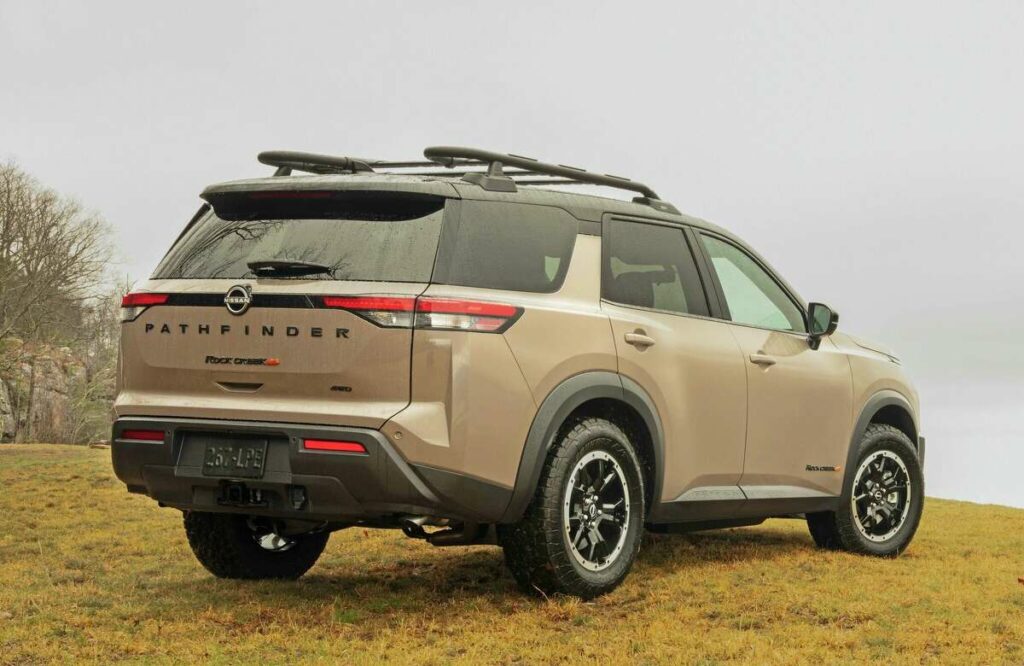
Nissan’s financial woes are your gain. For the third consecutive month, the automaker is pushing zero-percent loans to prop up U.S. sales numbers. Whether you need a compact Rogue, midsize Murano, or three-row Pathfinder, you’re looking at thousands in interest savings. Nissan’s desperation is real, and shoppers should capitalize.
👉 Find Nissan offers near you, and see offer details.

Expires sooner: October 31 (this Friday)
Subaru’s breakout hit gets a pricing break just in time for snow season. At 1.9% APR, you’re barely paying interest. Prefer to lease? The $249/month offer is one of the better compact SUV leases we’ve seen this fall. Act fast—Subaru confirmed this deal ends Friday.
👉 Have AI negotiate Subaru prices for you, and see offer details.

Expires sooner: October 31, 2025
Here’s a simple truth: low rates matter more on expensive cars. Financing a $55,000 BMW at 0.90% versus the typical 6% saves you over $9,000 across five years. The redesigned X3 is already drawing strong reviews, and this financing makes it even more compelling. Don’t sleep on this one—it expires Friday.
👉 Negotiate BMW prices with AI, and see offer details.

Most of Mazda’s October incentives are forgettable, but the CX-50 bucks the trend. Standard all-wheel drive, generous ground clearance, and top safety ratings make this a smart buy for winter weather.
👉 Find CX-50 offers near you, and see offer details.

The Grand Cherokee L stretches 11 inches longer than the standard model, delivering real third-row space and extra cargo room. That added practicality now comes with zero-percent financing—but only on the L. The regular Grand Cherokee? You’re stuck with 4.9% APR. Choose wisely.
👉 Find Grand Cherokee L offers near you, and see offer details.

The deal: Below-market financing on America’s favorite crossover
Toyota just dropped a redesigned RAV4 with major upgrades, and Honda’s feeling the heat. The CR-V’s 3.99% financing isn’t as flashy as some competitors, but it’s still well below typical loan rates. If you’re loyal to Honda, this is your window to save on financing before the calendar turns.
👉 Have AI negotiate CR-V prices for you, and see offer details.
These deals won’t last past this weekend, and negotiating with dealers can be exhausting. That’s where we come in.
CarEdge Pro’s AI negotiator gives you instant access to agentic AI that negotiates anonymously for you. Tell your AI agent what cars you’re interested in, your needs, wants, and budget, and have AI take it from you.
CarEdge Concierge takes it further—we’re America’s most-trusted car buying service, and we handle everything from finding inventory to closing the deal.
Here’s what makes us different: we work for you, never the dealer. No kickbacks, no hidden fees, just expert guidance that saves you money and stress.
Whether you tackle this on your own with our tools or hand it off to our team, we’re here to help.